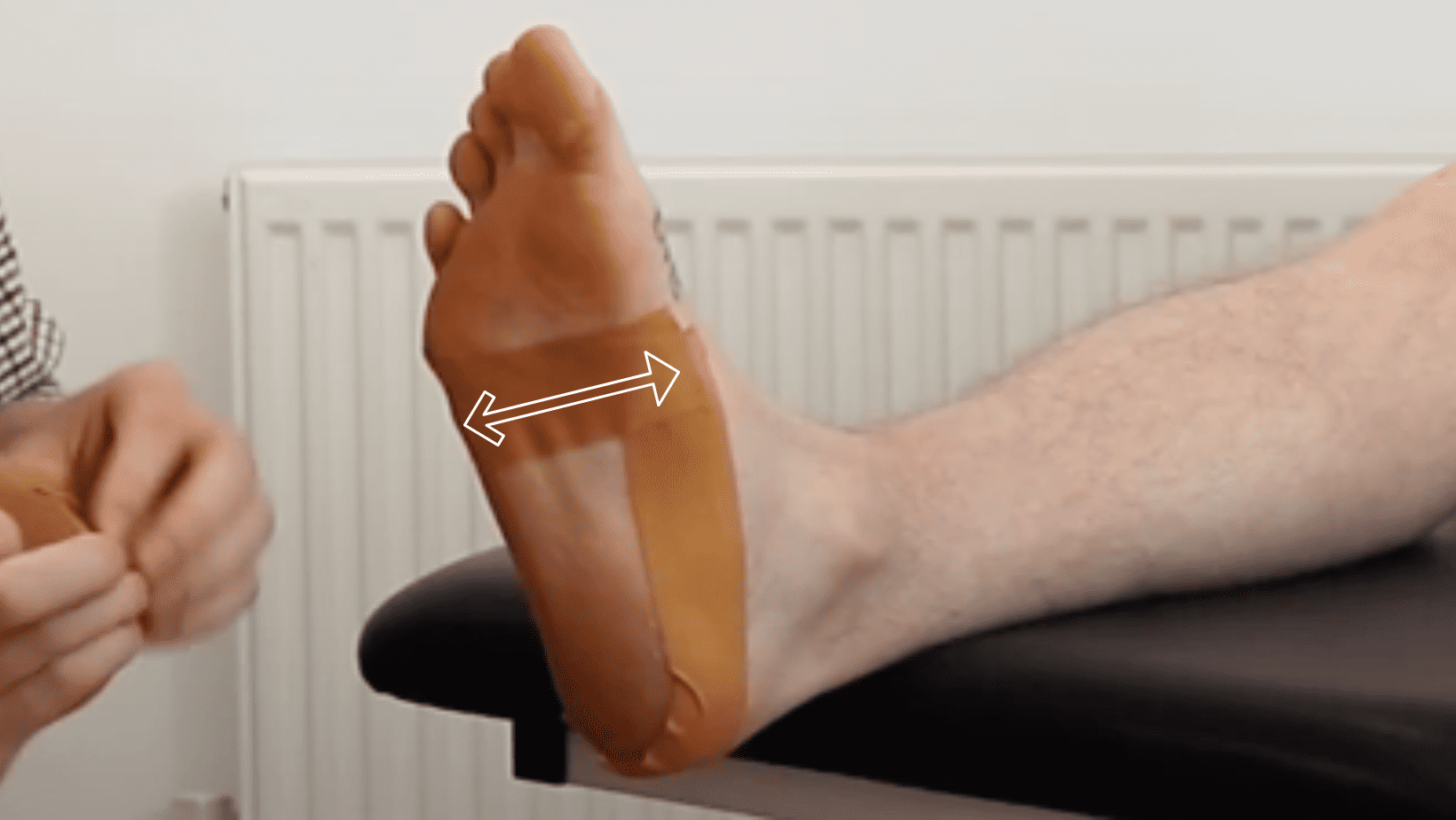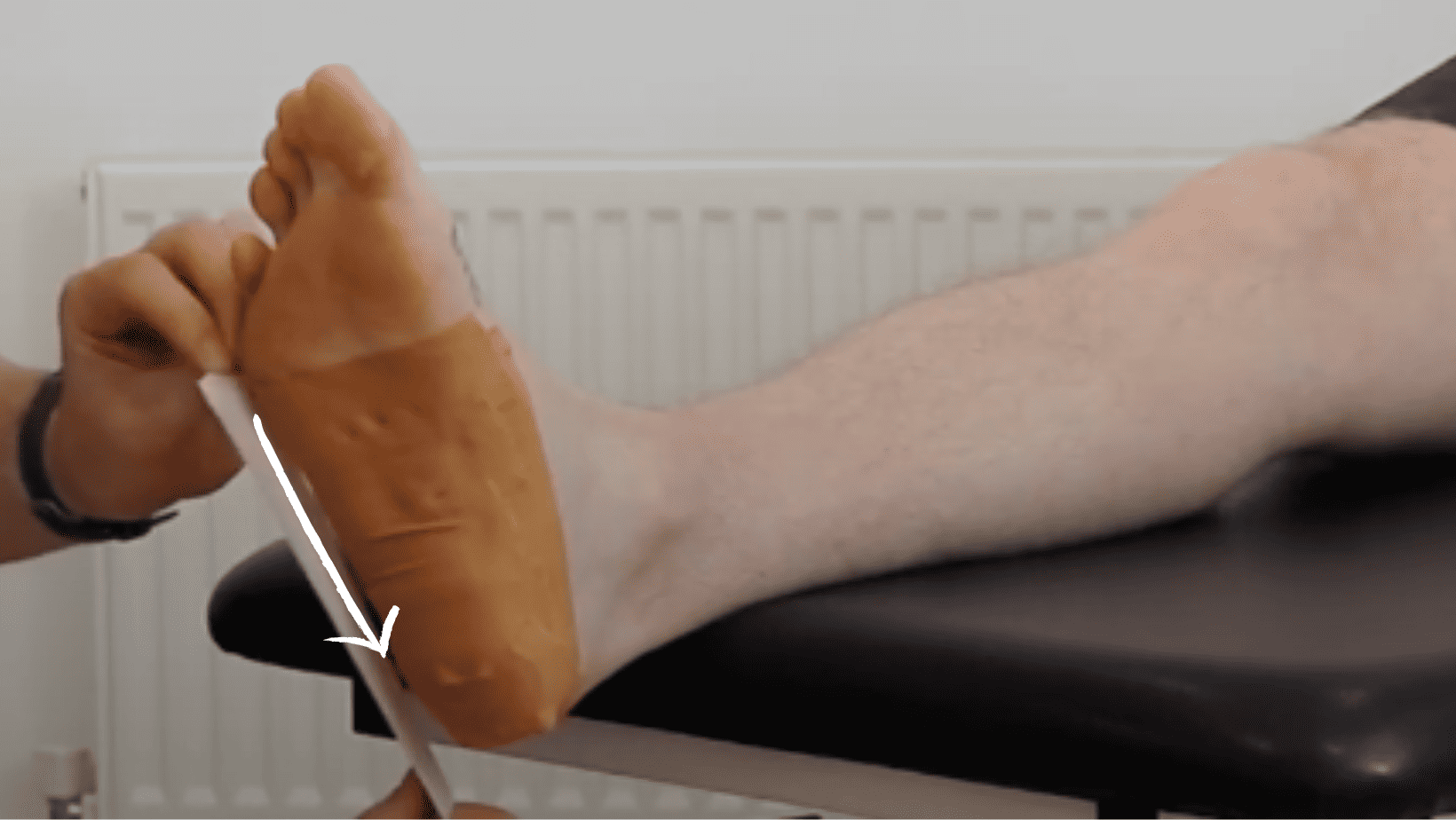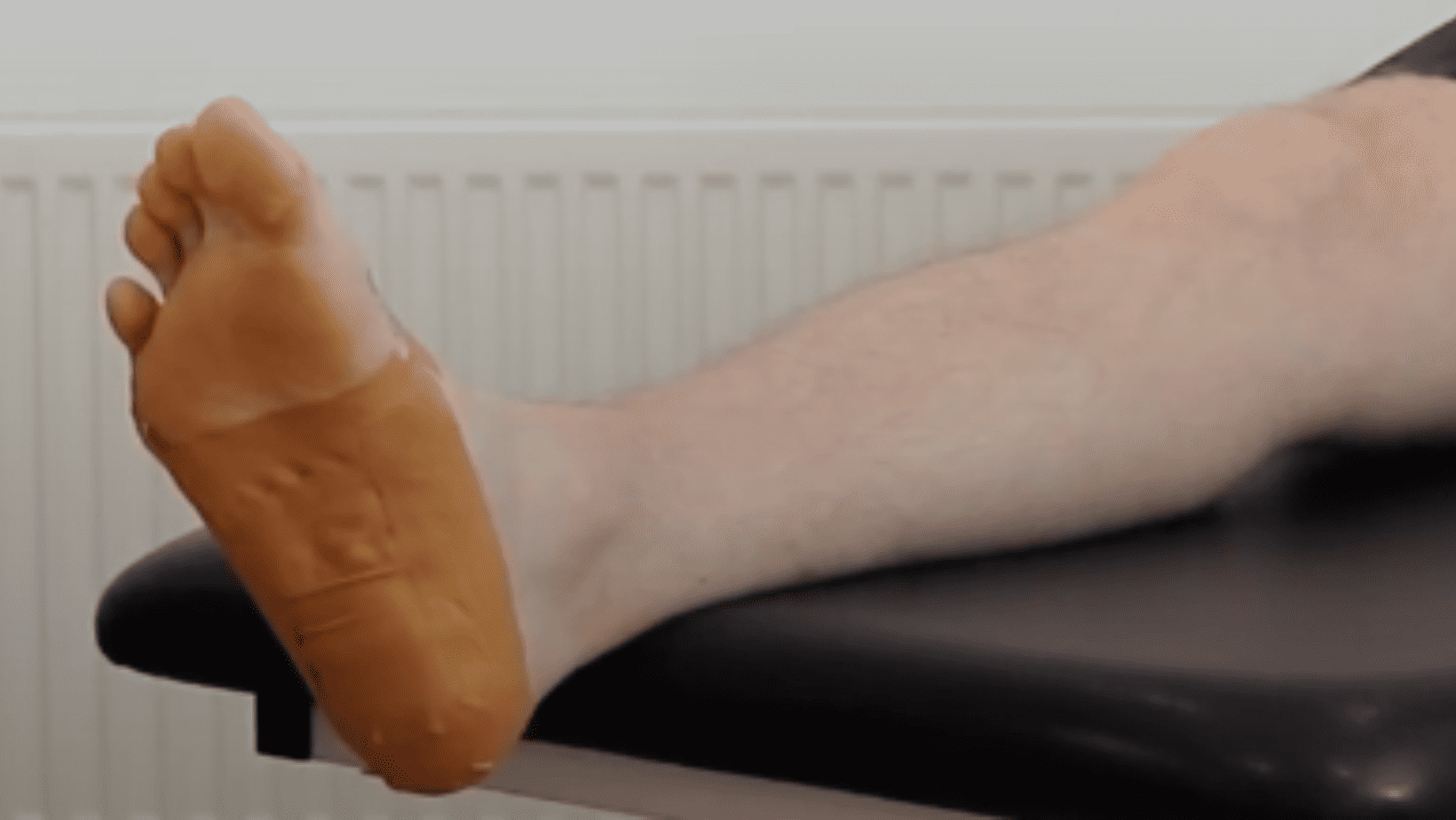Read More >
- Anterior Ankle Impingement - July 24, 2022
- Tarsal Coalition - October 12, 2022
- Sural Nerve Pain - October 3, 2022
Plantar Fasciitis is one of the most common causes of heel and arch pain. It is a difficult condition to treat, and it should be managed alongside a healthcare professional such as a Physiotherapist or a Podiatrist.
Taping is one of the most effective forms of treatment for Plantar Fasciitis pain relief, and it can be used alongside strengthening exercises, stretches and the correct footwear.
We will take you through a step-by-step guide in this article on how to perform Plantar Fasciitis Taping.
Plantar Fasciitis Taping
Step-by-Step Taping Guide:

1: Prepare your foot: Position your foot off the edge of a bed or raised surface, ensuring it’s comfortable.
2: Apply the base tape: Starting from the baby toe, apply the tape along the border of your foot, up towards the big toe. Ensure it’s well-stuck down, avoiding creases to prevent blisters.
3: Apply strips to the underside of the foot: The first strip should be applied under the big toe joint, where it protrudes when the big toe is bent back. Apply the strip with upward pressure to help shorten the plantar fascia, which can help provide pain relief and reduce inflammation.
4: Continue applying strips: Cover the entire underside of your foot with overlapping strips, applying the same upward pressure as before.


4: Lock down the strips: Once the underside of your foot is covered, lock the strips down on the sides of your foot to prevent unravelling. Pat the tape down for a secure hold.
5: Apply the final strip: Place a strip over the top of the forefoot to lock everything in place. Don’t wrap it too tight, as the feet will spread when standing. Pat down the tape to secure it.
This Plantar Fasciitis taping technique can provide pain relief for three to five days, and the tape can get wet (pat it dry afterwards). If you experience any redness or itching, remove the tape immediately. The recommended tape for this technique is 3.5 cm brown zinc oxide tape, which can be found on Amazon.
Medical Disclaimer: The information provided in this article and accompanying video is for educational purposes only. It is not a substitute for professional medical advice, diagnosis, or treatment. Always seek the advice of your healthcare provider with any questions you may have regarding a medical condition.
Physiotherapy with James McCormack
This is not medical advice. We recommend a consultation with a medical professional such as James McCormack. He offers Online Physiotherapy Appointments.

